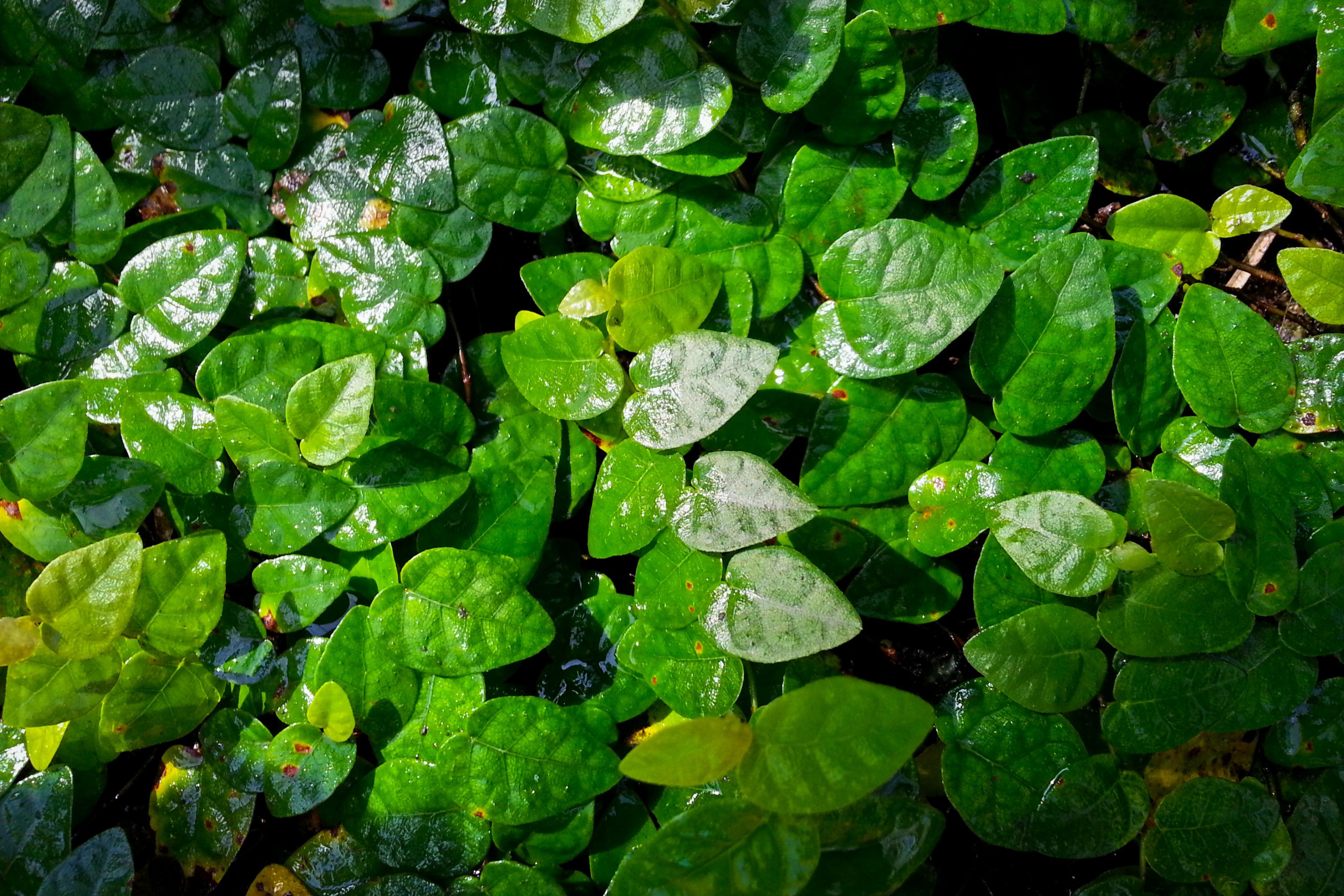Creeping Fig
(Ficus pumila)

Description
Ficus pumila, commonly known as the creeping fig or climbing fig, is a species of flowering plant in the mulberry family, native to East Asia (China, Japan, Vietnam) and naturalized in parts of the southeastern and south-central United States. It is also found in cultivation as a houseplant. The Latin specific epithet pumila means "dwarf", and refers to the very small leaves of the plant. Ficus pumila is a woody evergreen liana, growing to 2.5–4 m (8 ft 2 in – 13 ft 1 in). It can grow up to 9–12 m (30–39 ft) tall if it isn't regularly pruned. The juvenile foliage is much smaller and thinner than mature leaves produced as the plant ages. The leaves are oval, cordate, asymmetrical, with opposite veins. It is creeping or can behave like a liana and also climb trees, rocks, etc. up to 4 m in height or more. The aerial roots secrete a translucent latex that hardens on drying, allowing the sticks to adhere to their support. As the common name, "creeping fig" indicates, the plant has a creeping/vining habit and is often used in gardens and landscapes where it covers the ground and climbs up trees and walls. It is hardy down to 1 °C (34 °F) and does not tolerate frost. Therefore in temperate regions is often seen as a houseplant. It is fast-growing and requires little in the way of care. Though it can be invasive when environmental conditions are favorable. Its secondary roots or tendrils, respectively on certain buildings with fragile mortars or structures made of fragile materials (certain pergola, etc.), can cause structural damage. It is poorly resistant to frost, but can be used as an indoor plant, including a green wall in cold to temperate areas.
Taxonomic tree:







